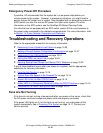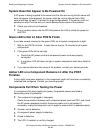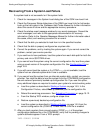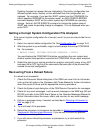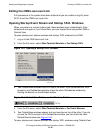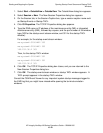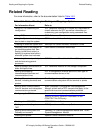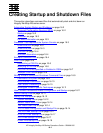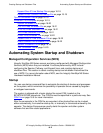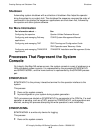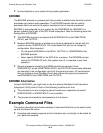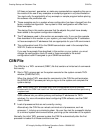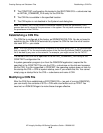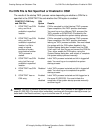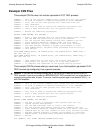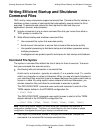
Creating Startup and Shutdown Files
HP Integrity NonStop NS-Series Operations Guide—529869-005
16-2
Automating System Startup and Shutdown
Expand-Over-IP Line Startup File on page 16-18
Expand Direct-Connect Line Startup File on page 16-18
Tips for Shutdown Files on page 16-19
Shutdown File Examples on page 16-19
System Shutdown File on page 16-20
CP6100 Lines Shutdown File on page 16-21
ATP6100 Lines Shutdown File on page 16-21
X.25 Lines Shutdown File on page 16-21
Printer Line Shutdown File on page 16-22
Expand-Over-IP Line Shutdown File on page 16-22
Direct-Connect Line Shutdown File on page 16-22
Spooler Shutdown File on page 16-23
TMF Shutdown File on page 16-23
Automating System Startup and Shutdown
Managed Configuration Services (MCS)
Integrity NonStop NS-Series servers are being configured with Managed Configuration
Services (MCS) when they are installed. Functions performed by MCS include
configuring the Spooler, Pathway, and Expand lines, and creating startup and
shutdown files. This section is about creating startup and shutdown files without the
use of MCS. For more information about MCS, see the Integrity NonStop NS-Series
Hardware Installation Manual.
Startup
You can use startup command files to automate the starting of devices and processes
on the system, which minimizes the possibility of operator errors caused by forgotten
or mistyped commands.
The system is shipped with a basic startup file named CIIN, located on the
$SYSTEM.SYS00 subvolume. The CIIN file must be specified in a particular way. See
CIIN File on page 16-5 for more information.
After the commands in the CIIN file are executed, other startup files can be invoked
either automatically, from another startup file, or manually in commands entered by the
operator. The startup file sequence usually starts the spooler and other system
software first and then starts applications.



